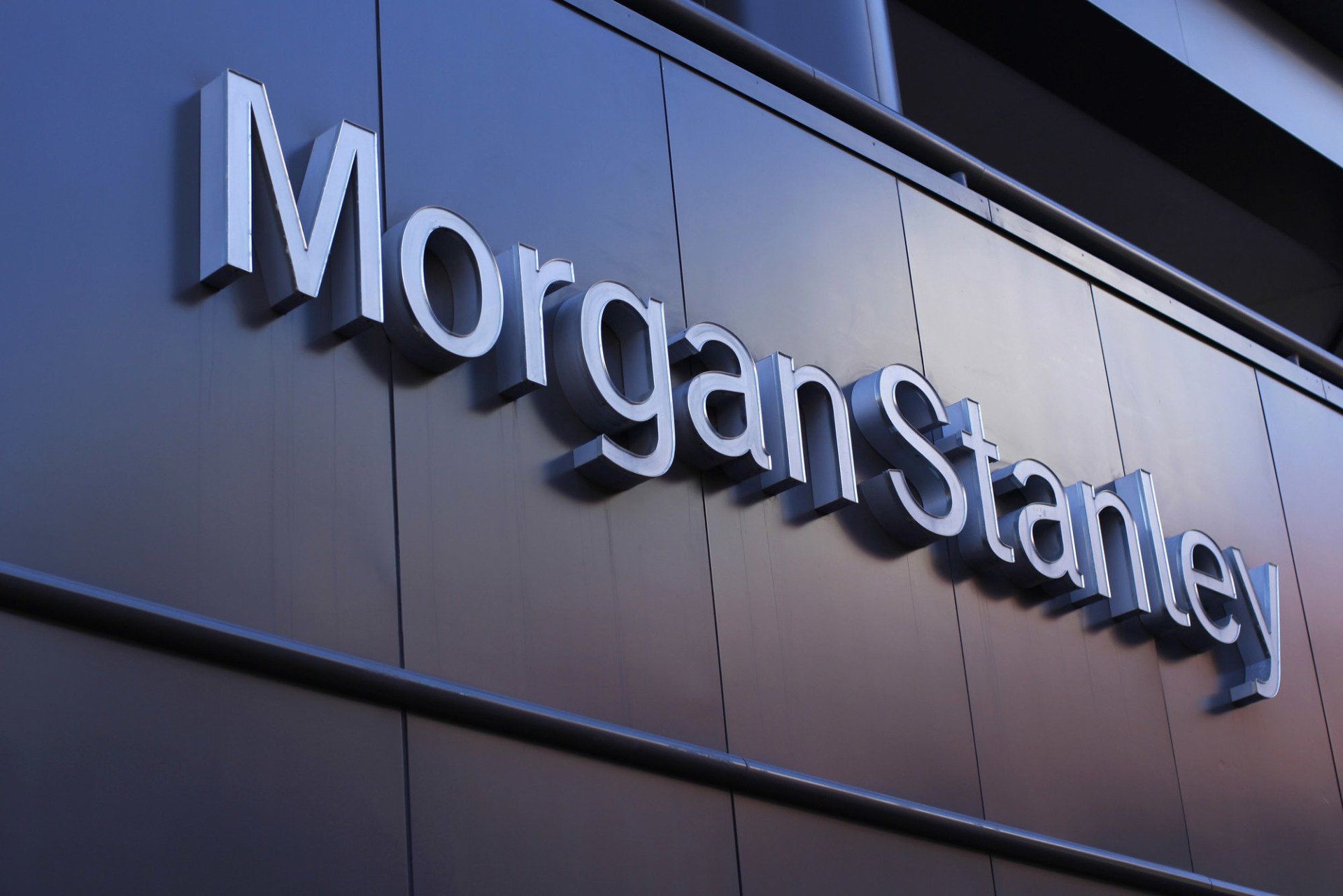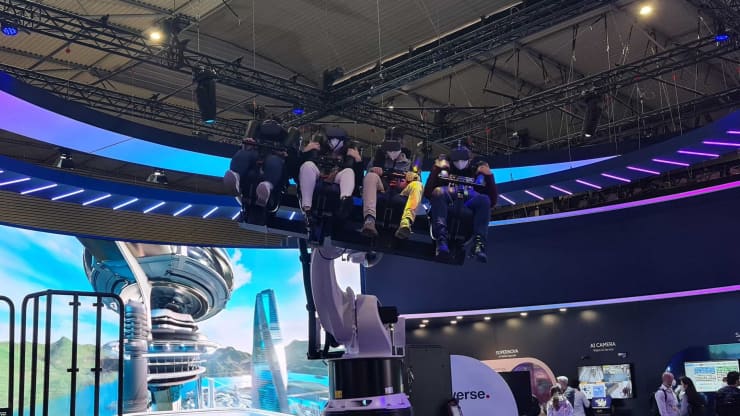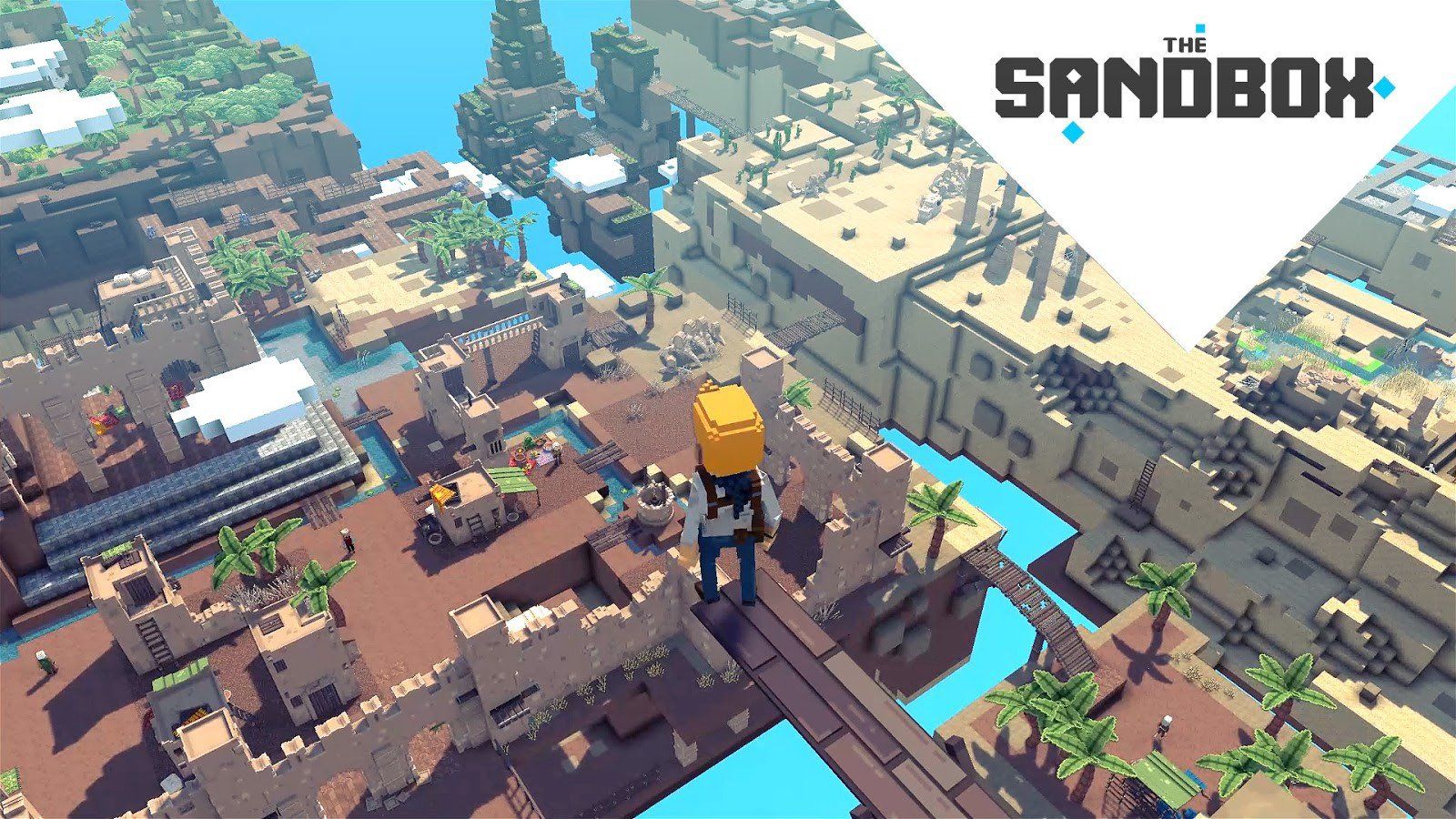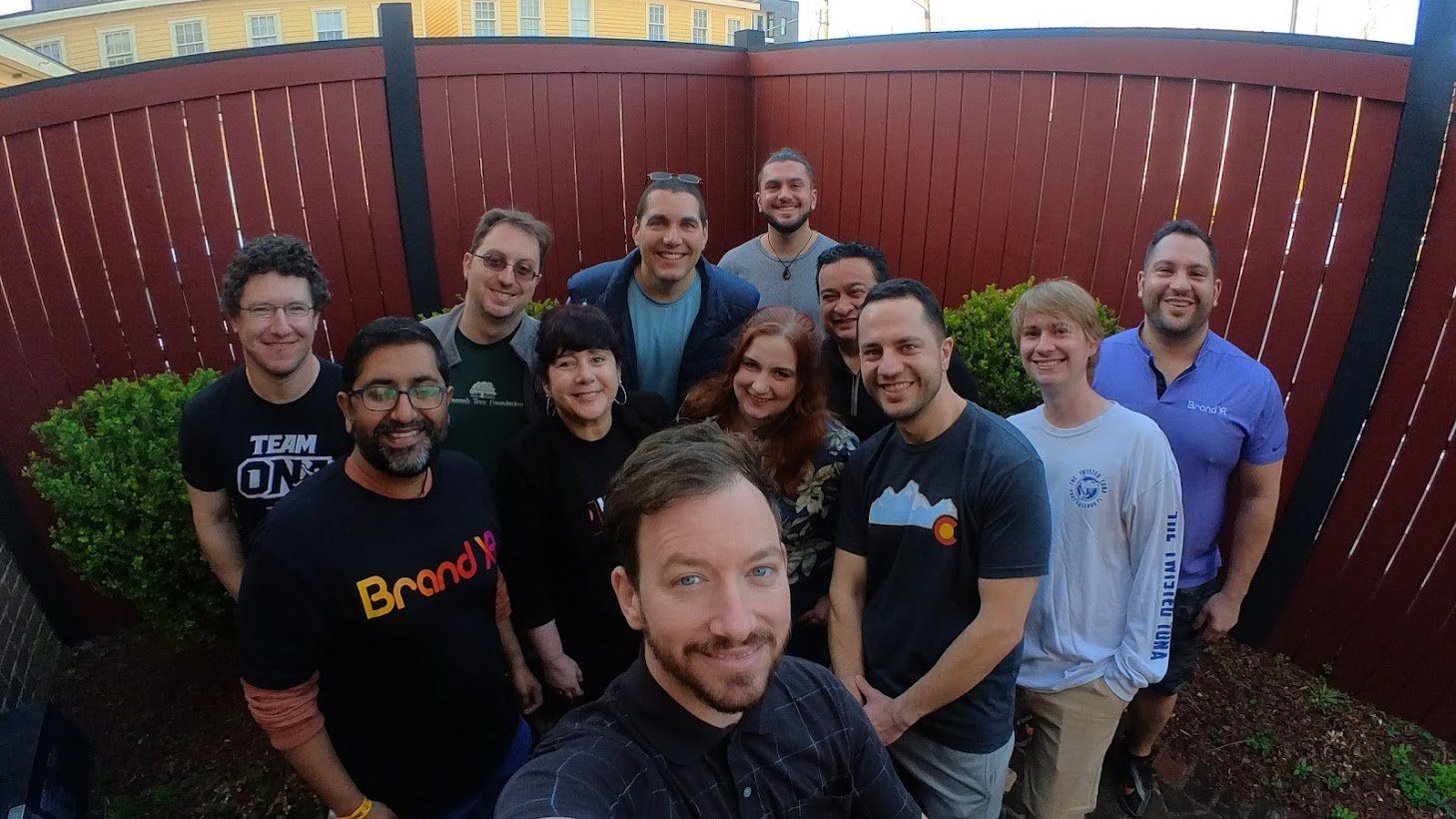Our new investors, we have an IG filter and what is The Sandbox?
Our new investors, we have an Instagram filter and what is 'The Sandbox?'
Welcome to the Metaverse #5

Our mentor, investor list expands!
It's been a great early part of 2022 for the BrandXR team!
As we set off on a team retreat in Savannah, Ga., we learned that we would be one of eight businesses to participate in the seventh cohort of Morgan Stanley's multicultural innovation lab!
As part of the program, Morgan Stanley also became an investor in our company.
That's a pretty big deal, if we do say so ourselves.
To be able to learn from a prestigious organization like Morgan Stanley is an experience that will help shape who we are.
Our cofounders Moody Mattan and Kunal Patel will spend time every month on site in New York City learning from experts in several areas of business leadership.
This comes right on the heels of last month's announcement that we are also in an LG-run program dedicated to supporting businesses with an eye on the future.
Mattan and Patel have already spent time in New York, giving the Morgan Stanley team a better glimpse of the team and the company we have been building here.
Here is a look at Morgan Stanley's senior client adviser Carla Harris talking on CNBC about the corhort during which she says thousands of companies applied to the lab. CHECK IT OUT HERE

Company news Part II: Our environmental project launched to the public!,
We have got something cool (seriously, that was an accidental pun) for you all to download, check out and have fun with.
Our new "Save Our Snow" Instagram filter, made alongside U.C. Davis' Tahoe Environmental Research Center, the Palisades Tahoe ski resort and Protect Our Winters, recently launched to the public.
Scan the QR code above to download an Instagram filter that gives you a cool, decade-specific appearance but also takes you through nearly 100 years of what climate change has done to our snowy mountains all the way to what it could do in the future.
It's a new way to use augmented reality, one that is socially aware and will help you get more informed, as well.
We at BrandXR have been excited to see how augmented reality can be purposeful.
Sure, the fun filters are great to experience but when you can combine that with a greater purpose, it makes the technology so much more impactful.
You can check out our launch on YouTube AT THIS LINK!

No, this isn't exactly what we had in mind when we said "Metaverse"
THE NEWS
Great development at MWC: restraint
Terminology is important when a new technology emerges.
At Mobile World Congress in Barcelona, there was a glimpse of both good and bad versions of this related to the Metaverse.
One the one hand, you had Telefonica.
The Spanish company announced that it had appointed what it calls its first "chief metaverse officer."
If this kind of thing is not done right, it could spell trouble for what's already a clouded definition of what The Metaverse is for the public.
However, for now, it appears to be trending well because the company is smart enough to admit that this is an unknown world right now, for the most part.
"We don't know yet," an official said about Telefonica's role in the Metaverse. "But for sure we are going to be analyzing this very carefully ... because we believe that this movement is unstoppable."
On the flip side, the gathering also saw some companies showing off what have become normal, VR-equipped roller coasters ... and calling it The Metaverse. Sigh.
OUR TAKE

We are in a formative moment of the Metaverse. The businesses that lead in this space will innovate and be considered gurus that can help the industry grow. The fact remains that too many businesses are eager to capitalize on short-term buzz around this term so they ignore the big picture. If you mislabel your VR experiences as "The Metaverse," consumers will see through it. The approach needed is Telefonica's, which understands right now what it doesn't understand.
--------------------------------------------------------------------
We hope you like what you see. We bet your friends would, too! Forward to other Metaverse and XR junkies and let's build this community!
---------------------------------------------------------------------

Sandbox Metaverse hits 2M users ... oh, and did we mention Snoop Dogg is involved!
Do you want to know how excited the general public (or at least a portion of it) is about The Metaverse? Look no further than The Sandbox.
This company has been creating what it hopes eventually becomes one of the big players when it comes to permanent virtual worlds for people to exist in.
So far, it's looking good.
The company announced that, while still in its testing phase, it has surpassed 2 million users.
Perhaps more importantly for the company, Snoop Dogg, The Walking Dead and Atari are just a few of the notable connections The Sandbox has made.
The Sandbox is built on blockchain and non-fungible tokens (NFTs).
One of the attractions is that players and creators can own their own content, which is where celebs come in.
Let's be clear: celebrity backing in a new world can be a catalyst to success so while Snoop's involvement certainly doesn't guarantee success, it's still a good feather in The Sandbox's cap.
MORE HERE FROM THE COIN REPUBLIC
OUR TAKE

Let's reiterate what was said above: Celebrity endorsement will not be the be all/end all to success in The Metaverse. But it certainly cannot hurt. At its most basic sense, it's a good way to keep what you are building in the public eye. At a more extreme level, however, The Sandbox might have unlocked the formula for success in this bold new world. Take what you offer, give your users a fighting chance to own a part of it and support those who visit and use it regularly. Add on celebrity support and you're looking at a formula that might turn into one that others emulate as we discover what this future world becomes.
THE NEWS

FC Barcelona wants more fan engagement through the Metaverse
It's no secret that the Metaverse, NFTs, blockchain and all the other buzz words will touch all sorts of industries.
Sports, of course, is no different.
One of the biggest names in the biggest sport in the world has jumped into the fray now (with all due respect Tampa Bay Buccaneers).
FC Barcelona announced that it would look to increase fan engagement through these technologies.
To get there, the club has already built infrastructure around the launch of Barca Studios and Barca Innovation Hub, both outfitted to work on production of assets and the introduction of new technologies as they emerge.
That this well known club now has a team to work specifically on Metaverse-related content will only increase its appeal.
But the irony, perhaps, is that the impact of Barcelona's announcement might have a bigger effects because of how other teams will follow rather than what it specifically does.
OUR TAKE

On the surface, this appears to be yet another "X industry joins the Metaverse" story. However, FC Barcelona is no spring chicken. They are 120 years old and, oftentimes, as they go so goes the rest of the soccer world. This is one world that I am deeply embedded (general sports not necessarily soccer) so I'm interested to see how, when and if each major sports league dives into the Metaverse.
Company news, Part III: We made this list of great companies for inclusion!

Really excited to be featured on Purpose Jobs' list of great companies for diversity and inclusion in 2022!
It really is a matter of pride in who we are and the workplace that we are building and cultivating at BrandXR, not to mention the businesses we help support through contract and freelance work.
One of the things we take seriously as we grow our team is being able to continually hire in a way that we can be considered for a list like this one on the regular.
No, it's not about lists, of course.
But it's about recognition that the more inclusive you are, the wider viewpoints you welcome into the fold, the better off your company's future could be.
Check out our short post on LinkedIn and then feel free to connect with us there.
LET ME TELL YOU ONE MORE THING

"It's completely immersive. With water, that's wet!"
A tourism video for Iceland reminds us that while the Metaverse is certainly something that is coming at us, full-speed ahead, it's still OK to occasionally take a step back and have a little fun with it.
Deliberately poking fun at Facebook CEO Mark Zuckerberg's painfully awkward video inviting us to adopt his "Meta" company name, Icelandic tourism officials did some pretty admirable work.
The video tells us that "The Icelandverse" is completely immersive, even without "silly-looking headsets" and that we can connect worlds "without being super weird."
You can see their take on the "not -so-new chapter in human connectivity at the link below.
You'll definitely get a kick out of it.
Hey, thanks for reading! Like what you see? I bet your friends would, too!
Forward this newsletter to other Metaverse and XR junkies in your network and let's build this community! SUBSCRIBE TO THE NEWSLETTER HERE!














